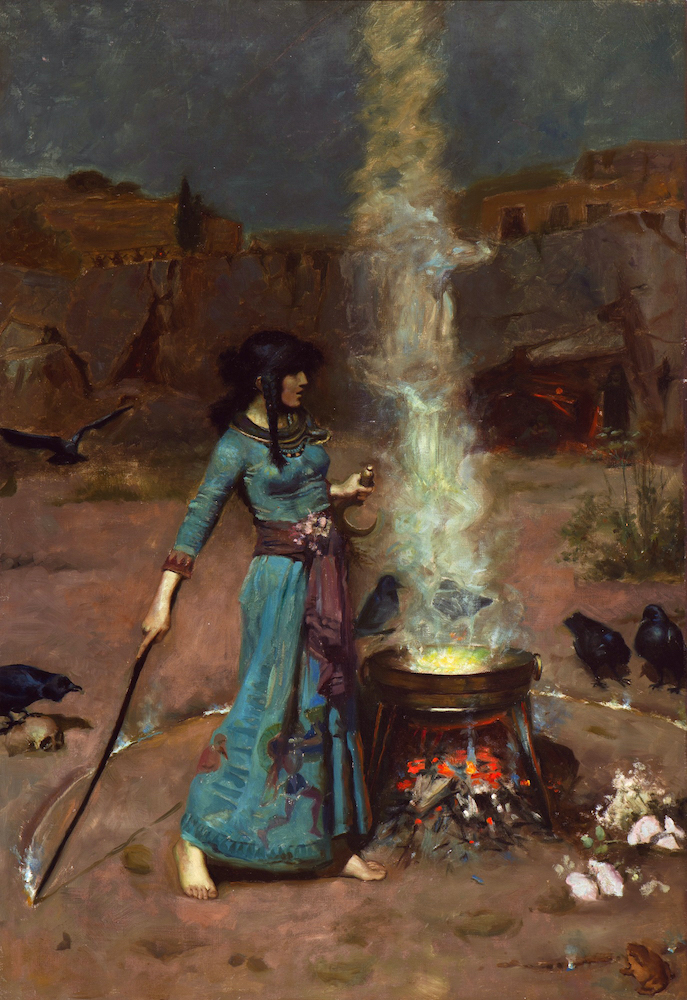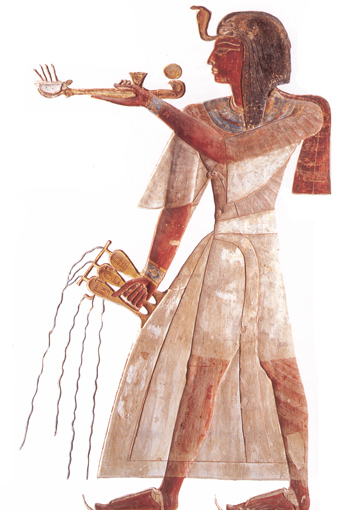I believe that the ministrant of Isis should develop some facility with ritual. Of course, this is more important for those of us who are involved in ceremony with other people, less important if we work solitary. But even for solitaries, having some ritual skill benefits our spiritual work by making it more graceful. This, in turn, enables us to be less self-conscious and better able to focus on developing our relationship with Isis.
Ritual is how we human beings do religion. Throughout the world—almost without exception—the practice of religion involves the practice of ritual. Even quiet, private prayer or meditation is normally ritualized in some way. Whether by folding our hands, sitting in a yoga asana, counting a rosary, or simply lighting a candle, some sort of ritual pattern is usually incorporated in spiritual activity.
Ritual is a communicative art that goes beyond what we are able to express by speech alone, dance alone, music alone, or intellectual effort alone. Because ritual can combine all these things—and energize them with the power of symbolism—ritual enables us to communicate with the other people in the ritual and with the Divine in ways beyond our normal capacity. Some things, particularly the ineffable, sacred things we are trying to express in a relationship with Isis, can only be expressed through ritual.
Ritual takes us beyond the body-mind/soul-spirit split. It gives us a holistic way to communicate with and relate to Isis. It is a primary tool of the ministrant of Isis for worship and spiritual growth. Working to gain ritual proficiency is particularly appropriate for someone in an intense relationship with Isis because of the strength of the ritual tradition in Egypt and because Isis is a Goddess of Sacred Magic, an art that is almost always practiced through ritual. What’s more, I can tell you from my experience with other ministrants of Isis, it seems that the Goddess often gifts us with rituals that they are then asked to share.
What ritual does
Ritual is completely natural to human beings. It is an essential, even primal, human activity. Indeed, some of the earliest evidence from our cave-dwelling ancestors is evidence of ritual.
There are biologically based rituals in which we engage—for example, sexual behaviors. We also take part in social ritual. We may shake hands when we meet each other; we mark life passages such as marriage or death with ceremony. These types of rituals give us ways to interact with each other and to understand each other, especially at times when words fail, such as funerals.
And then there is sacred ritual. Sacred ritual not only helps us recognize changes in our lives, it also helps us create changes and—this is important for devotees of Isis—provides us with a means of worship.
Ritual is not just a set of actions we move through by rote. Ritual is powerful because it deeply affects us. It affects us psychologically and it affects us physiologically, both of which, in turn, feed back into our spiritual selves.
You may be familiar with the work human potential researcher Jean Houston. She has done extensive work on what she calls “psychophysical” exercises. They include such things as visualization, working with the kinesthetic body (some ritualists might call this the astral body), learning through conversation with a personified aspect of the self, and personification of an object to discover its “essence.”
Many of us would recognize these things as elements of at least some types of ritual. From her studies, Houston concludes that these exercises give people the ability to learn more quickly, to think on multiple tracks at once, and to tune into the symbolic and mythic parts of themselves at will. This alone would make ritual worthwhile, but there’s more.
In therapy, Houston says these ritual-type exercises work much better for patients than talking therapies alone because talking therapies involve only one part of the person’s being while these exercises, (rituals), involves the whole person.
I strongly agree that the holistic nature of ritual is deeply valuable for human beings. By addressing the whole person, physical and spiritual, ritual can move us toward greater wholeness. Wholeness is one of the keys to spiritual growth and spiritual growth is one of the key responsibilities of ministerial work with and for Isis.
Invocation and offering
Some of the basic components of ritual include chanting, singing, drumming, spoken invocation, moving in circles, dancing, meditation, and repeated patterns. Researchers have studied the effect of these things on the brain and the human nervous system and there seem to be two main things that these ritual components do in the human system: they trigger our emotions and they decrease the distance between us and others—including the Divine. These repeated patterns affect the brain’s neurological ability to define the limits of the self. They break down the walls we put up between ourselves and others—including those we erect between ourselves and the Goddess. Thus ritual helps us find self transcendence. By becoming less focused on ourselves, we can better open ourselves to the experience of Isis.
On the emotional side, strong rhythm or repetition (of a mantra, for example) has been shown to produce positive limbic discharge in the brain (the limbic system is part of the brain that deals with emotion among other things), which results in pleasurable feelings. If these feelings are prolonged, a part of the brain called the amygdala gets involved; the amygdala is connected with the fear-arousal system. Some researchers think that the combination of pleasure and a slight elevation in the fear-arousal system could produce the feeling of religious awe that many of us experience.
Ritual has also been proven to lower blood pressure, decrease heart rate, lower rates of respiration, reduce levels of the hormone cortisol (the “stress hormone”), and and create positive changes in immune system function. It seems that ritual is even good for our health.
Built for spiritual experience
None of this means that there is no magic in ritual. Far from it. What it means is that our physical bodies were built for and/or evolved this way so that we are able to participate in the magic of ritual and to better communicate with the Divine; in our case, with Isis.
Our bodies are not the mere cause of the effect; they are its result. As the ancient Hermeticists would say: As Above, So Below. We are a microcosm reflecting the way the macrocosm works. Our bodies do not make us experience the spiritual. They enable us to experience the spiritual. We have evolved this way because the spiritual is real, because it is valuable, and because we human beings need to be able to experience it.
The magic of ritual profoundly affects us. Whether it’s a scripted group rite, a drumming circle, or an unscripted intuitive rite, ritual is one of our most powerful tools for human growth, spiritual expression, and Divine communion. The ministrant of Isis should have at least some facility with this important tool.
















